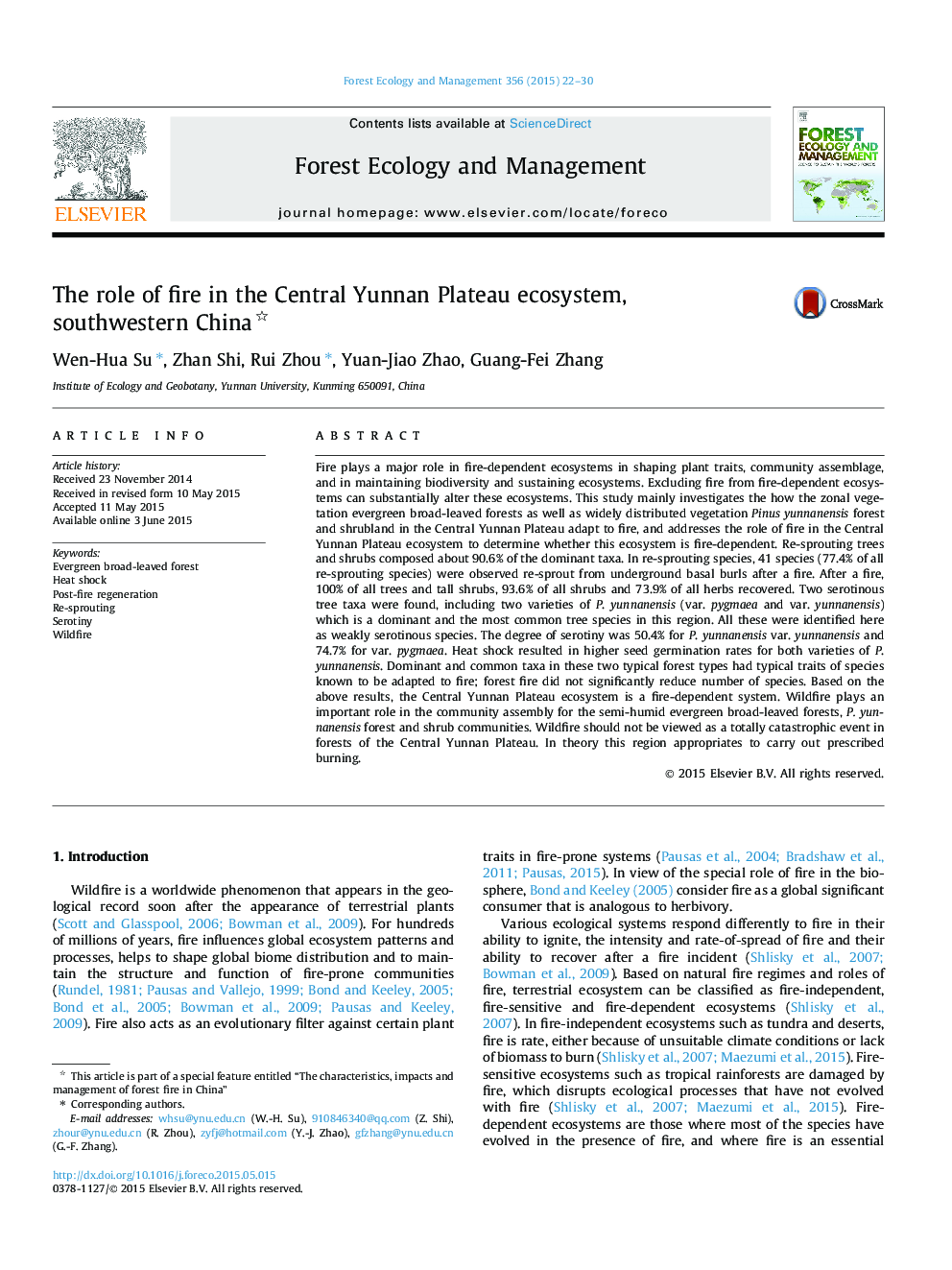| کد مقاله | کد نشریه | سال انتشار | مقاله انگلیسی | نسخه تمام متن |
|---|---|---|---|---|
| 86183 | 159171 | 2015 | 9 صفحه PDF | دانلود رایگان |
• Most species in semi-humid evergreen broad-leaved forests can re-sprout after fire.
• Pinus yunnanensis (dominant species of a widely distributed forest) is serotinous.
• Seed germination of Pinus yunnanensis is stimulated by high temperature.
• Subtropical ecosystems in Central Yunnan, southwestern China are fire-dependent.
• In theory Central Yunnan appropriates to carry out prescribed burning.
Fire plays a major role in fire-dependent ecosystems in shaping plant traits, community assemblage, and in maintaining biodiversity and sustaining ecosystems. Excluding fire from fire-dependent ecosystems can substantially alter these ecosystems. This study mainly investigates the how the zonal vegetation evergreen broad-leaved forests as well as widely distributed vegetation Pinus yunnanensis forest and shrubland in the Central Yunnan Plateau adapt to fire, and addresses the role of fire in the Central Yunnan Plateau ecosystem to determine whether this ecosystem is fire-dependent. Re-sprouting trees and shrubs composed about 90.6% of the dominant taxa. In re-sprouting species, 41 species (77.4% of all re-sprouting species) were observed re-sprout from underground basal burls after a fire. After a fire, 100% of all trees and tall shrubs, 93.6% of all shrubs and 73.9% of all herbs recovered. Two serotinous tree taxa were found, including two varieties of P. yunnanensis (var. pygmaea and var. yunnanensis) which is a dominant and the most common tree species in this region. All these were identified here as weakly serotinous species. The degree of serotiny was 50.4% for P. yunnanensis var. yunnanensis and 74.7% for var. pygmaea. Heat shock resulted in higher seed germination rates for both varieties of P. yunnanensis. Dominant and common taxa in these two typical forest types had typical traits of species known to be adapted to fire; forest fire did not significantly reduce number of species. Based on the above results, the Central Yunnan Plateau ecosystem is a fire-dependent system. Wildfire plays an important role in the community assembly for the semi-humid evergreen broad-leaved forests, P. yunnanensis forest and shrub communities. Wildfire should not be viewed as a totally catastrophic event in forests of the Central Yunnan Plateau. In theory this region appropriates to carry out prescribed burning.
Journal: Forest Ecology and Management - Volume 356, 15 November 2015, Pages 22–30
